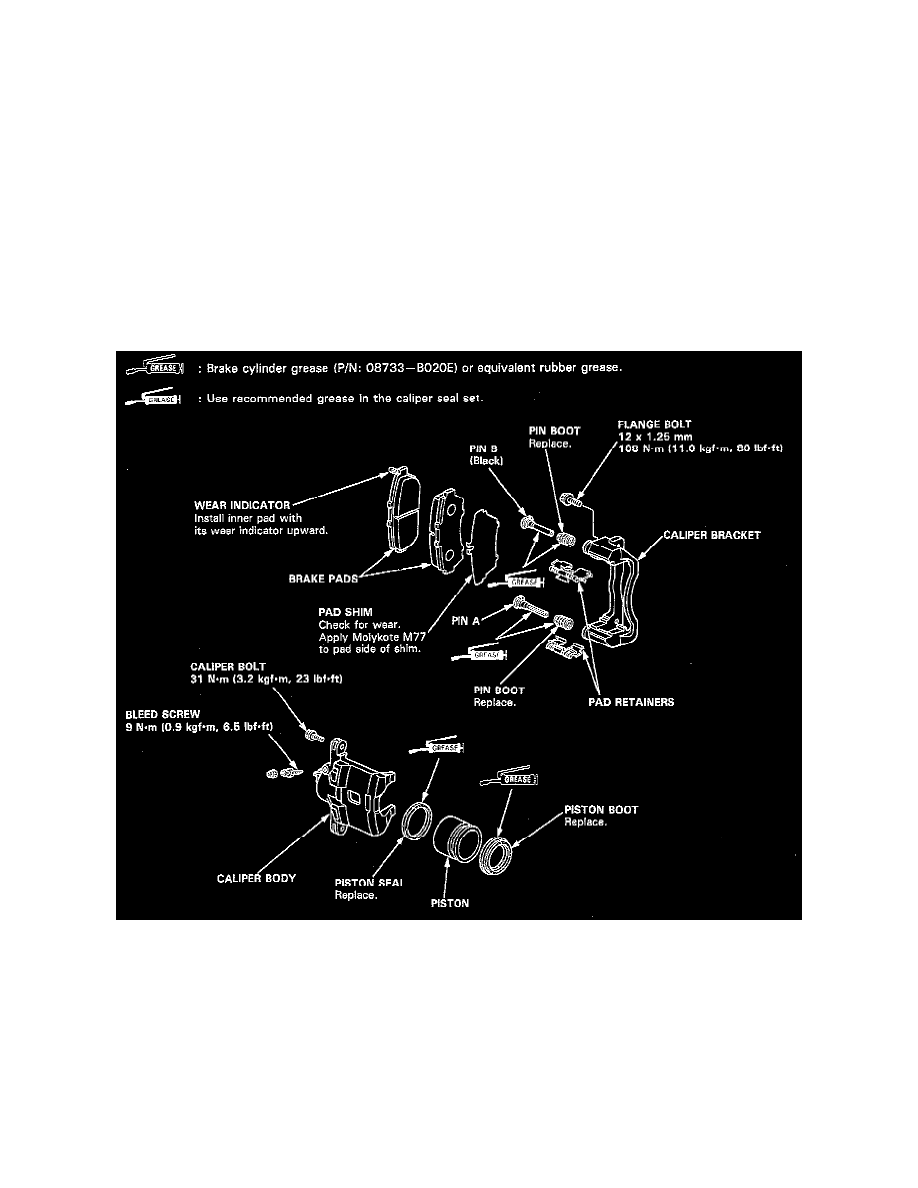Integra LS Coupe L4-1834cc 1.8L DOHC MFI (1997)

Brake Caliper: Service and Repair
Disassembly and Assembly
WARNING:
-
Never use an air hose or dry brush to clean brake assemblies.
-
Use an OSHA-approved vacuum cleaner to avoid breathing brake dust.
-
Contaminated brake discs or pads reduce stopping ability.
-
When reusing the pads, always reinstall the brake pads in their original positions to prevent loss of braking efficiency.
CAUTION:
-
Do not spill brake fluid on the vehicle it may damage the paint if brake fluid does contact the paint, wash it off immediately with water.
-
Clean all parts in brake fluid and air dry; blow out all passages with compressed air. Before reassembling, check that all parts are free of dust and
other foreign particles.
-
Replace parts with new ones whenever specified to do so. Make sure no dirt or other foreign matter is allowed to contaminate the brake fluid.
-
Always use Genuine Honda DOT 3 Brake Fluid. Using a non-Honda brake fluid can cause corrosion and decrease the life of the system.
NOTE:
-
Coat piston, piston seal, and caliper bore with clean brake fluid. Replace all rubber parts with new ones whenever disassembled.
1. Clean the piston and caliper bore with brake fluid, and inspect for wear and damage.
